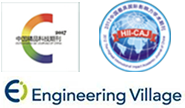Abstract:
Graphene aerogel has become an ideal host for various zero dimensional, one-dimensional, two-dimensional and three-dimensional materials because of prominent dimensional characteristics in both micro and macro scales with its interconnected three-dimensional framework. The high conductivity, specific surface area and structural stability make it widely used in the field of energy storage in recent years, especially in the application of anodes for metal ion batteries and supercapacitors electrodes with high specific capacity. Firstly, the treatment strategies of graphene precursor and aerogel are sorted out, and the effects of different treatment methods on the formation of graphene precursor and aerogel are introduced. Secondly, according to the different energy storage mechanisms, the modified application and performance of graphene aerogel composites in mainstream energy storage devices are introduced. Finally, the research progress of graphene aerogel composites for electrochemical energy storage are summarized, the current challenges are pointed out and the future research directions are prospected.


 下载:
下载: